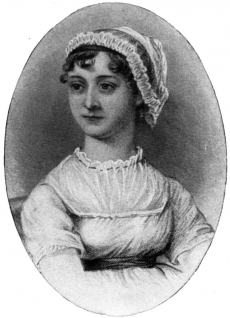
In part 1, we saw the world in which Jane Austen grew up, and how her love of writing began. The world Jane Austen grew up in heavily influenced her writing, so that’s why they’re mostly about medium-wealth women trying to marry for both money and for love. Usually, they get both, but not without a lot of trouble first. But that was the world she lived in – a woman could only hope for social advancement by marrying well, and not by working hard or doing anything intellectual.
Her last novel was Emma, a story about a matchmaker who thinks about love in the context of other people, but never for herself. She said of the title character that nobody would like her, “except for myself”. It’s said that this work was dedicated to King George the 4th, once she found out he kept her books in his collection. She didn’t particularly like him, apparently, but she couldn’t actually say no.
Whilst Emma was in the works, Jane Austen started writing a new book called Persuasion. Persuasion is about a woman who falls in love with a man from the Navy, who finally come back to land after defeating Napoleon in 1814. She has to break off their engagement, though, because he isn’t rich enough and her family don’t approve of the alliance. But the man from the Navy works his way up through the ranks, becomes a captain, and starts to earn a considerable amount of money. Then, she can marry him! But Jane Austen had to delay the publishing of this and of Emma, because her brother went bankrupt, causing all the family to lose a lot of money.
So, love and relationships from the perspectives of women are common themes in her work. This might have been quite revolutionary at the time, especially because she wrote under the pen name “a woman”. That’s it – books would have said “Pride and Prejudice” by “a woman”! Even the Bronte sisters, who came half a century later, pretended to be men so that their publishers (and their audiences) would take them seriously. Being a woman was hard then, just as it is now.
In 1816, Jane Austen began to show signs of sickness, but she ignored it and continued to write. She would die a year later at age 41. As medicine wasn’t advanced then as it is now, nobody really knew what she died from, and we’re not much wiser now. Causes range from typhus, to TB and cancer. Jane Austen is buried in Winchester Cathedral, but she has a tablet in Poet’s Corner in Westminster Abbey.
Jane Austen’s influence on her own time, and on ours, is uncontested. People have seen her work under a number of different microscopes, including feminist and anti-slavery viewpoints. Her works have been adapted into plays, films, TV shows, and some more recent authors have even written their own versions of Jane Austen’s work. Her life has sparked a range of films that try to uncover what the author herself was really like, but how can we possibly know? None of us will ever be able to interview her, unfortunately. But for now, Jane Austen thoroughly deserves to be the face of our £10 note. It’s the least we can do to honour one of our greatest writers.
Image from: http://austenonly.com/2011/12/05/a-new-jane-austen-portrait/

0 Comment:
Be the first one to comment on this article.